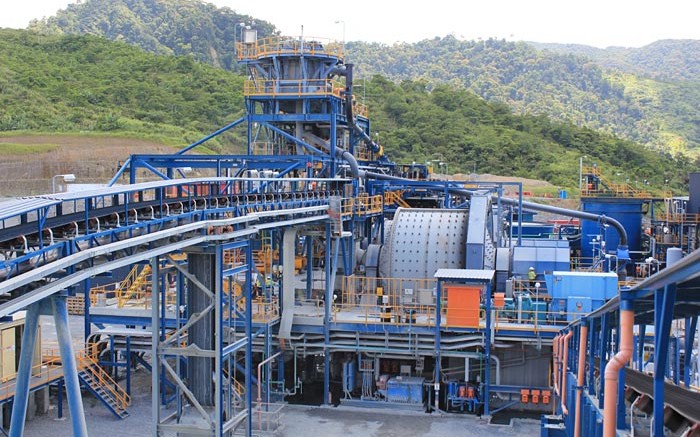Commercial production began in April at OceanaGold’s (TSX: OGC) Didipio mine in the Philippines, and in the second quarter the mine churned out 13,676 oz. gold and 5,710 tonnes copper. For the first six months of the year Didipio’s production reached 20,553 oz. gold and 9,373 tonnes copper.
OceanaGold acquired the Didipio project, 270 km north of Manila on Luzon Island, through a merger with Climax Mining in November 2006, started construction in June 2011 and sent the first ore through the mills in December 2012.
In a June interview, OceanaGold’s CEO and managing director Michael Wilkes said production guidance for 2013 at Didipio is 50,000 to 70,000 oz. gold and 15,000 to 18,000 tonnes copper at a cash cost range of negative US$370 to negative US$50 per oz. gold, after by-product credits.
Wilkes said the plan was to ramp up the plant to a throughput of 3 million tonnes per year in 2014 and to 3.5 million tonnes in 2015 through debottlenecking efforts that would require “only small amounts of capital expenditure of roughly a couple of million dollars.”
He also noted that OceanaGold has a number of exploration tenements in the Philippines outside of the Didipio mining permit, and that the company was working with government officials to start exploration there. The company has also started drilling two targets near the Didipio within the mining permit. The Didipio property straddles a mountainous region between the provinces of Nueva Vizcaya and Quirino, and has about 30 prospects for gold and copper.
In the second quarter, cash costs on a by-product basis at Didipio were negative US$586 per oz. on gold sales of 11,086 oz. gold and copper sales of 5,073 tonnes copper.
The low-cost operation in the Philippines stands out when compared with OceanaGold’s Macraes and Reefton mines in New Zealand, where second-quarter cash costs totalled US$918 per oz. gold on sales of 59,620 oz. gold in the second quarter.
In late June, OceanaGold’s board of directors approved a change in the mine schedule at the Reefton mine on the South Island to respond to declining gold prices.
Under the plan OceanaGold has cut the mine schedule at Reefton by two years so that the mine will transition into a care and maintenance phase by the middle of 2015, pending an improvement in the gold price to extract the remaining resource.
While gold production at Reefton will be reduced by 110,000 oz. from 2015–2017, OceanaGold says costs and risks will drop under the revised plan, with capital budget reductions over the next two years of between US$32 million and US$36 million.
And to further de-risk the next two years of production at Reefton, OceanaGold entered into a zero-cost dollar hedging program over an estimated 115,650 oz. gold to be produced during the period. The program involves a series of bought-gold put options, creating a floor of US$1,248 per oz. for 115,650 oz., starting from July 2013 to June 2015.
Given the reduction in the mine schedule at Reefton and the declining gold price, OceanaGold recorded a pre-tax impairment charge of US$85.5 million.
“Didipio continued its strong ramp-up, while the New Zealand operations continue to struggle,” wrote Brian Quast of BMO Capital Markets after the quarterly results, adding that the US$85.5-million writedown for Reefton “should have come as little surprise, following the recent decision to curtail the mine life there to end in 2015.”
Quast also pointed out that production at Didipio, especially for copper, was stronger than the BMO Research estimate, “which represents a solid first quarter of commercial production for this asset.”
Reg Spencer of Canaccord Genuity wrote on July 29 that “OceanaGold’s June quarter report has not only detailed a strong start to life for Didipio, but has also revealed how OGC is responding to the decline in gold prices.”
He added that “the previously announced deferral of pre-stripping at Reefton has been followed up with deferred cutbacks for Macraes. This, combined with other targeted cost savings, is expected to see free cash flow improve markedly over the coming 18 to 24 months.”
The company produced 68,353 oz. gold and 5,710 tonnes copper in the second quarter. Total gold sales reached 70,706 oz. at cash costs net of by-product credits of US$682 per oz., and revenues totalled US$131.2 million.
At press time OceanaGold was trading $1.57 per share within a 52-week range of $1.04 to $3.70.
BMO Capital Markets’ Quast has a $1.90-per-share target price on the stock.


Be the first to comment on "OceanaGold’s Didipio mine starts strong"